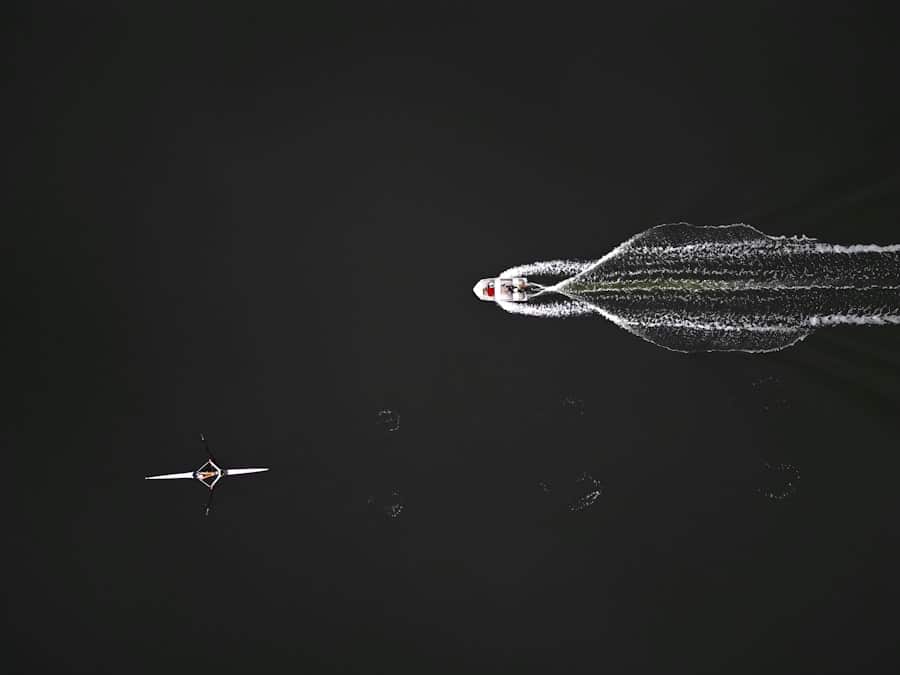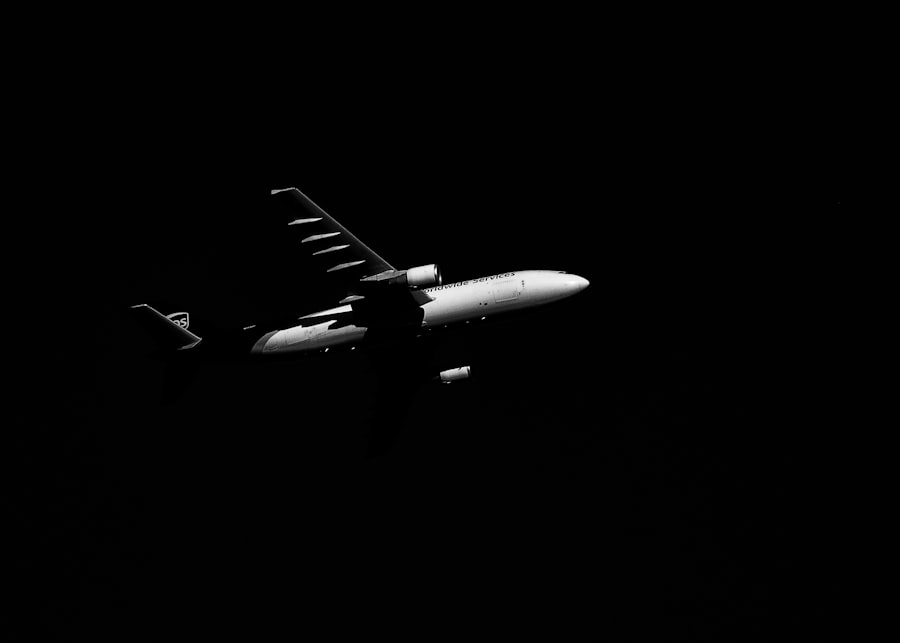Spaceplanes represent a fascinating intersection of aeronautics and astronautics, combining the capabilities of traditional aircraft with those of spacecraft. Unlike conventional rockets that rely solely on propulsion systems designed for space travel, spaceplanes are engineered to operate within both the Earth’s atmosphere and the vacuum of space. This dual functionality allows them to take off and land like an airplane while also being capable of reaching the high velocities required for orbital insertion.
The concept of spaceplanes has been around since the mid-20th century, with early designs such as the X-15 and the Space Shuttle paving the way for modern advancements. The allure of spaceplanes lies not only in their versatility but also in their potential to revolutionize access to space. As humanity’s interest in space exploration grows, so does the need for more efficient and cost-effective means of transportation beyond our planet.
Spaceplanes could facilitate a new era of commercial space travel, scientific research, and even tourism, making space more accessible than ever before. With advancements in technology and materials science, the dream of routine spaceplane operations is becoming increasingly feasible, promising to reshape our understanding of travel beyond Earth.
Key Takeaways
- Spaceplanes are a promising mode of transportation for rapid Earth-to-orbit travel, combining the capabilities of an airplane and a spacecraft.
- Advancements in spaceplane technology, such as reusable designs and advanced propulsion systems, are making rapid Earth-to-orbit travel more feasible and cost-effective.
- Potential applications for spaceplanes include transporting cargo and passengers to space stations, launching satellites, and enabling rapid response for space-based missions.
- Challenges and obstacles for spaceplane development include engineering complexities, safety concerns, and regulatory hurdles that need to be addressed for successful implementation.
- Spaceplane travel has the potential to reduce environmental impact and lower the cost of space travel, making it an attractive option for the future of space exploration.
Advancements in Spaceplane Technology
Recent years have witnessed significant strides in spaceplane technology, driven by both governmental and private sector initiatives. One notable example is the development of the Dream Chaser spacecraft by Sierra Nevada Corporation. This reusable spaceplane is designed to transport cargo and crew to the International Space Station (ISS) and is capable of landing on conventional runways, much like an airplane.
The Dream Chaser’s design incorporates advanced composite materials and a unique lifting body shape that enhances its aerodynamic efficiency during atmospheric re-entry. Another groundbreaking project is the SpaceX Starship, which, while primarily a fully reusable rocket, incorporates elements of spaceplane design with its ability to perform controlled landings. Starship’s heat shield technology and its capacity for rapid turnaround between flights are indicative of the direction in which spaceplane technology is heading.
Furthermore, companies like Virgin Galactic and Blue Origin are developing suborbital spaceplanes that aim to provide commercial space tourism experiences. These advancements not only highlight the technological progress being made but also underscore a growing interest in making space travel a reality for a broader audience.
Potential Applications for Rapid Earth-to-Orbit Travel

The potential applications for rapid Earth-to-orbit travel using spaceplanes are vast and varied. One of the most promising uses is in the realm of satellite deployment. Traditional rocket launches can be costly and time-consuming, often requiring extensive preparation and coordination.
Spaceplanes could streamline this process by providing more frequent and flexible launch opportunities, allowing for quicker deployment of satellites for telecommunications, Earth observation, and scientific research. In addition to satellite deployment, spaceplanes could play a crucial role in supporting human exploration beyond low Earth orbit. As missions to Mars and other celestial bodies become more ambitious, the need for efficient transportation systems will become paramount.
Spaceplanes could serve as a bridge between Earth and deep space missions, facilitating crew transfer to orbiting spacecraft or even acting as staging platforms for interplanetary travel. The ability to launch from conventional runways would significantly reduce infrastructure costs associated with traditional launch sites, making deep-space exploration more economically viable.
Challenges and Obstacles for Spaceplane Development
Despite the promising advancements in spaceplane technology, several challenges remain that must be addressed before these vehicles can achieve widespread operational status. One significant hurdle is the development of reliable thermal protection systems capable of withstanding the extreme temperatures experienced during re-entry into the Earth’s atmosphere. The materials used must not only endure high heat but also be lightweight enough to ensure efficient flight dynamics.
Another challenge lies in the integration of advanced propulsion systems that can operate effectively both within the atmosphere and in the vacuum of space. Current rocket engines are optimized for specific phases of flight, but spaceplanes require hybrid systems that can transition seamlessly between atmospheric flight and orbital insertion. This necessitates extensive research and development to create engines that can provide sufficient thrust while maintaining fuel efficiency across varying altitudes and speeds.
Environmental and Economic Implications of Spaceplane Travel
The environmental implications of spaceplane travel are multifaceted and warrant careful consideration as this technology develops. On one hand, reusable spaceplanes have the potential to significantly reduce waste associated with traditional rocket launches. By minimizing the number of single-use components, spaceplanes could lower the overall environmental footprint of space travel.
Additionally, advancements in propulsion technology may lead to cleaner burning fuels that produce fewer emissions during flight. Economically, the advent of spaceplanes could democratize access to space by lowering launch costs and increasing frequency. This could stimulate growth in various sectors, including telecommunications, Earth observation, and scientific research.
As more entities gain access to space, competition may drive innovation and further reduce costs, creating a positive feedback loop that benefits both industry and society at large. However, it is essential to balance these economic benefits with environmental stewardship to ensure sustainable practices are adopted as this new era of space travel unfolds.
Regulatory and Safety Considerations for Spaceplane Operations

As with any emerging technology, regulatory frameworks will need to evolve to accommodate the unique challenges posed by spaceplane operations. The dual nature of these vehicles—operating both as aircraft and spacecraft—complicates regulatory oversight. Existing aviation regulations may not adequately address the safety concerns associated with high-speed atmospheric flight or re-entry procedures typical of spaceplanes.
International cooperation will be crucial in establishing comprehensive safety standards that govern spaceplane operations globally. Organizations such as the International Civil Aviation Organization (ICAO) and national aviation authorities will need to collaborate closely with aerospace companies to develop guidelines that ensure safe operations while fostering innovation. Additionally, public perception and acceptance will play a significant role in shaping regulatory approaches; ensuring that safety measures are transparent and effective will be vital in gaining public trust in this new mode of transportation.
The Role of Spaceplanes in the Future of Space Exploration
Looking ahead, spaceplanes are poised to play a transformative role in the future of space exploration. Their ability to facilitate rapid access to low Earth orbit opens up new possibilities for scientific research and international collaboration on projects such as the ISS or lunar bases. As nations work together on ambitious goals like returning humans to the Moon or sending crewed missions to Mars, spaceplanes could serve as essential tools for transporting personnel and equipment efficiently.
Moreover, as commercial entities increasingly participate in space exploration, spaceplanes could enable a new era of public-private partnerships. Companies specializing in aerospace technology may collaborate with governmental agencies to develop innovative solutions for exploration challenges. This synergy could lead to breakthroughs in propulsion systems, life support technologies, and habitat construction techniques necessary for long-duration missions beyond Earth.
The Promising Future of Spaceplanes for Rapid Earth-to-Orbit Travel
The future of spaceplanes is undeniably promising as they stand at the forefront of a new era in aerospace technology. With advancements in materials science, propulsion systems, and regulatory frameworks, these vehicles have the potential to revolutionize how we access space. From facilitating rapid satellite deployment to supporting human exploration beyond our planet, the applications for spaceplanes are vast and varied.
The collaborative efforts between governments, private companies, and international organizations will be crucial in shaping a sustainable future for space travel. Ultimately, as we look toward the stars, spaceplanes may very well become a cornerstone of our journey into the cosmos, making access to space not just a dream but a reality for generations to come.
In exploring the advancements in space travel, particularly the development of spaceplanes for rapid Earth-to-orbit travel, it’s essential to consider the broader technological landscape that supports such innovations. An interesting related article is Hacker Noon Covers a Range of Topics Across the Tech Sector, which delves into various technological advancements and trends. This article provides context on how emerging technologies in different sectors can influence and accelerate the progress of space travel technologies, including the development of efficient and reliable spaceplanes.
FAQs
What is a spaceplane?
A spaceplane is a vehicle that can fly like an airplane within Earth’s atmosphere and then travel into outer space.
What are the advantages of spaceplanes for rapid Earth-to-orbit travel?
Spaceplanes offer the potential for rapid and reusable access to space, reducing the cost and time required for launching payloads and passengers into orbit.
What are some challenges in developing spaceplanes for Earth-to-orbit travel?
Challenges in developing spaceplanes include the need for advanced propulsion systems, thermal protection for re-entry into Earth’s atmosphere, and the development of lightweight yet durable materials.
What are some potential applications for spaceplanes in the future?
Spaceplanes could be used for transporting cargo and crew to space stations, servicing satellites, and potentially even for space tourism and exploration missions to the Moon and beyond.
Are there any spaceplanes currently in development or operation?
Several companies and space agencies are actively developing spaceplanes, including the Sierra Nevada Corporation’s Dream Chaser, SpaceX’s Starship, and the European Space Agency’s Space Rider. Additionally, the X-37B spaceplane has been used for classified missions by the United States Air Force.

